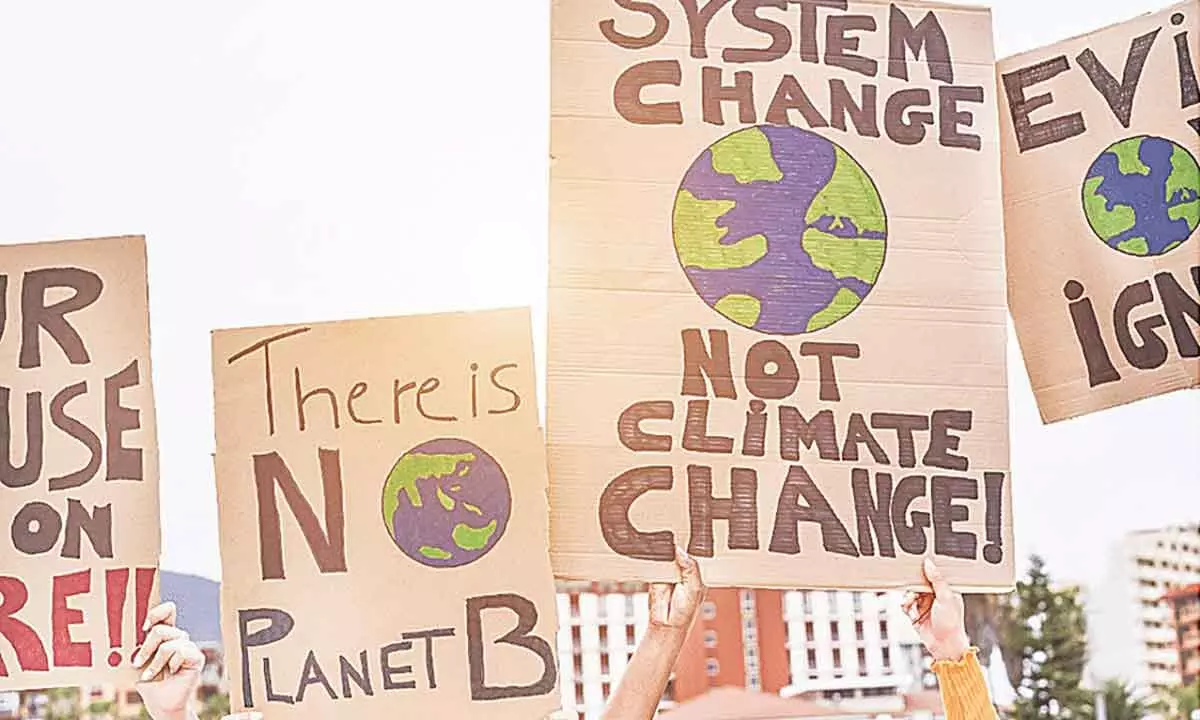Population control, too, will help mitigate climate change

According to the International Panel for Climate Change, human activities, principally through emission of greenhouse gases (GHGs), have unequivocally caused global warming, with global surface temperature reaching 1.1°C in the decade 2011-2020 above the level existed during 1850-1900. Global warming leads to climate change.
Carbon dioxide (CO2), a part of GHGs, contributes more to climate change compared to other gases, hence the concern is mainly on reducing its emissions. Historical cumulative net CO2 emissions from 1850 to 2019 were about 2400 giga tonnes, of which more than half (58%) occurred between 1850 and 1989, and about 42% occurred between 1990 and 2019, means significantly increased in the last three decades onlydue to human activities and steep rise in energy demand.The global carbon dioxide emissions increased significantly to 37.1 billion tonnes per year due to rise in population by 6.38 billion over last 122 years.
According to the International Energy Agency, approximately 2.8 billion people live in countries where the average temperature is more than 250C;less than 10% use air conditioners at present. Summer temperatures are rising in many parts of the globe. Hotter regions predicted to get hotter with changing climate.Europe has been warming twice as fast as the global average since the 1980s.In 2022, many European Countries had their warmest year on record. Expected that by 2050, about 75% of world’s population could depend on air conditionersto stay cool, further contributing to climate change due to emissions of CO2 from fossil fuels used for generation of electricity to run them.
The global average meat consumption per person per year in 2021 was 34 Kg. The top meat-eating countries are USA, Australia, Argentina, New Zealand, Spain with per capita per year consumption ranging from 100-124 kg. (FAO). According to a study by The Guardian, meat production accounts for nearly 60% of all greenhouse gases from food production.One kg of beef production creates 13.3 kgs of CO2, while it is 28 times less for wheat. Meat production is projected to increase with rise in population and shortage of vegetables, legumes & nuts, so also, CO2 emissions from it.
Carbon footprint is an important factor in climate change mitigation. China has the highest carbon footprint of about 8.4 tons per person per year, while India has 0.56 ton. If India’s carbon footprint is increased to that of China’s, it would be detrimental to the environment and would exacerbate the situation of climate change. Only 17% global population lives in developed countries, rest 83% need to consume energy more than the former to reach a reasonable standard of living that further worsen climate change.
Reducing population size would be advantageous for climate change mitigation, on the grounds that lower population would naturally correspond to lower emissions, could reduce global CO2 emissions by 40% or more in the long term.But the primary determinant of the eventual amount of climate change is not the emissions rate, but rather cumulative emissions accumulated over a century. Population control can reduce emission rate and addition to cumulative CO2 inventory in atmosphere.
The world has lost one- third of its forests since the end of last ice age, 10,000 years ago, half of it in the last century alone. The net loss in forests globally was 4.7 million hectares per year since 2010(Our World Data). Natural carbon sinks absorb roughly half of atmospheric CO2 including forests .As the population increases, the demand for land for various purposes such as agriculture, housing, and infrastructure also increases, which must be met from forests leading to deforestation. Controlling the population can avoid it.
Robert Engelman, a senior fellow at the Population Institute in Washington, D.C., feels population is an issue in climate change. It is underreported, underrated, under-talked-about as an issue in climate change.
Sustainable population refers to human population the planet Earth can sustain. Estimates for it vary widely ranging from 0.65 billion to 9.8 billion, with 8 billion being typical estimate. The estimates were based on land & water resources, food production, energy consumption and waste management, but none on climate change point of view.
People contribute directly and indirectly to anthropogenic emissions of CO2, at the same time reducing the capacity of carbon sink on the planet. As the population increases, emissions increase, however, the quantity depends upon economicstatus, technological status, standard of living, adaptation to climate change etc.However, population control, besides checking climate change, can improve economy, health, environment sustainability, gender equality and standard of living of surviving people.
(Writer is a retired Scientist, Council of Scientific & Industrial Research)















